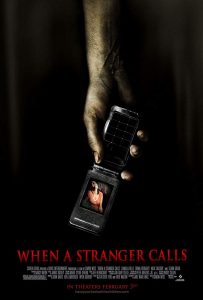There’s no denying that it’s ridiculous on the face of it. You can’t very well have a third final destination, given certain definitions of the word final. But? Not caring, me. Halloween II was the day after Halloween, and few if any of the Friday the 13th movies will be heard to even mention the date. That’s just the way sequels work. And as this is a valid sequel to Final Destination, I’m satisfied.
Now, was it a good sequel? This relies on two postulates. One: that the original was good, and it was. Not only can anyone die at any time, but that’s actually the premise of the movie. You can’t adhere to the rules much more closely than that. And two: that this movie be exactly the same as the original good movie. This is a mistake that occurs all too often in horror. If the film was good, why confuse people by making the sequel be some different, unrecognizable movie? (In stark contrast to the rest of Hollywood, where we call making the exact same movie twice in a row by a more derogatory term than sequel, that being remake.) But it’s still not as good as Final Destination 2, the best possible kind of sequel to a horror movie: a continuation of the original.
The plot is simple enough. A person has a vision of impending doom, then sees the world start to conform to that vision, and so escapes the doom, accidentally or purposefully including a small group of people in that escape. Death’s plan now being out of whack, the seemingly lucky people start to die in grotesque and inexplicable ways soon thereafter to right the balance. (This is clearly not the friendly, compassionately goth Death envisioned by Neil Gaiman.) On the bright side, the world offers up clues to avoid these deaths, if only they can be perceived and acted upon. Thusly, in any given sequel the audience receives a reasonably spectacular catastrophe, followed by a series of grisly deaths that would fit right into the opening segment of a Six Feet Under episode. Except for naked chicks, that’s all I’ve ever asked of the genre. And this has those too.
 I learned two things about Valentine’s Day when I went to catch the late showing of
I learned two things about Valentine’s Day when I went to catch the late showing of